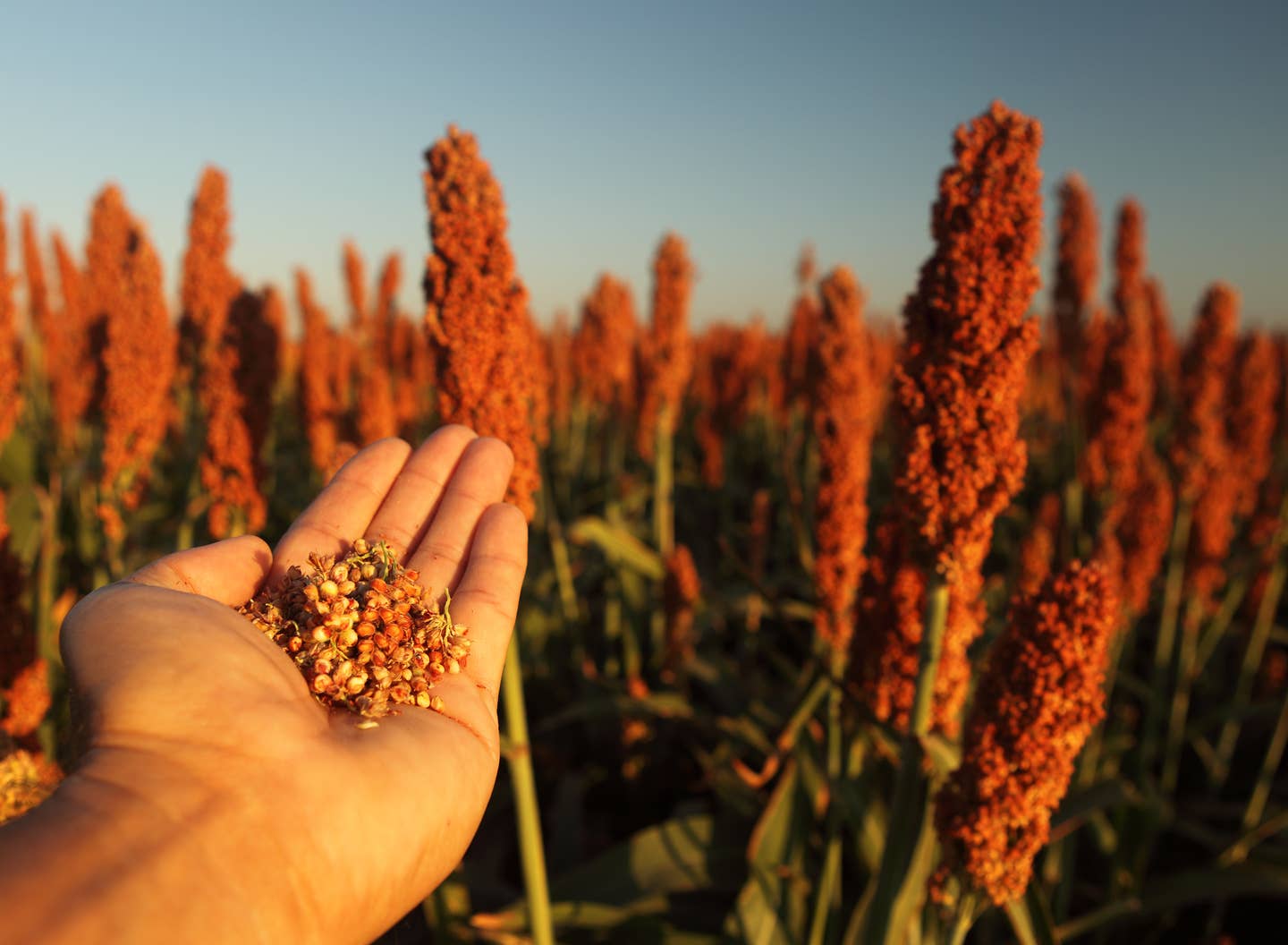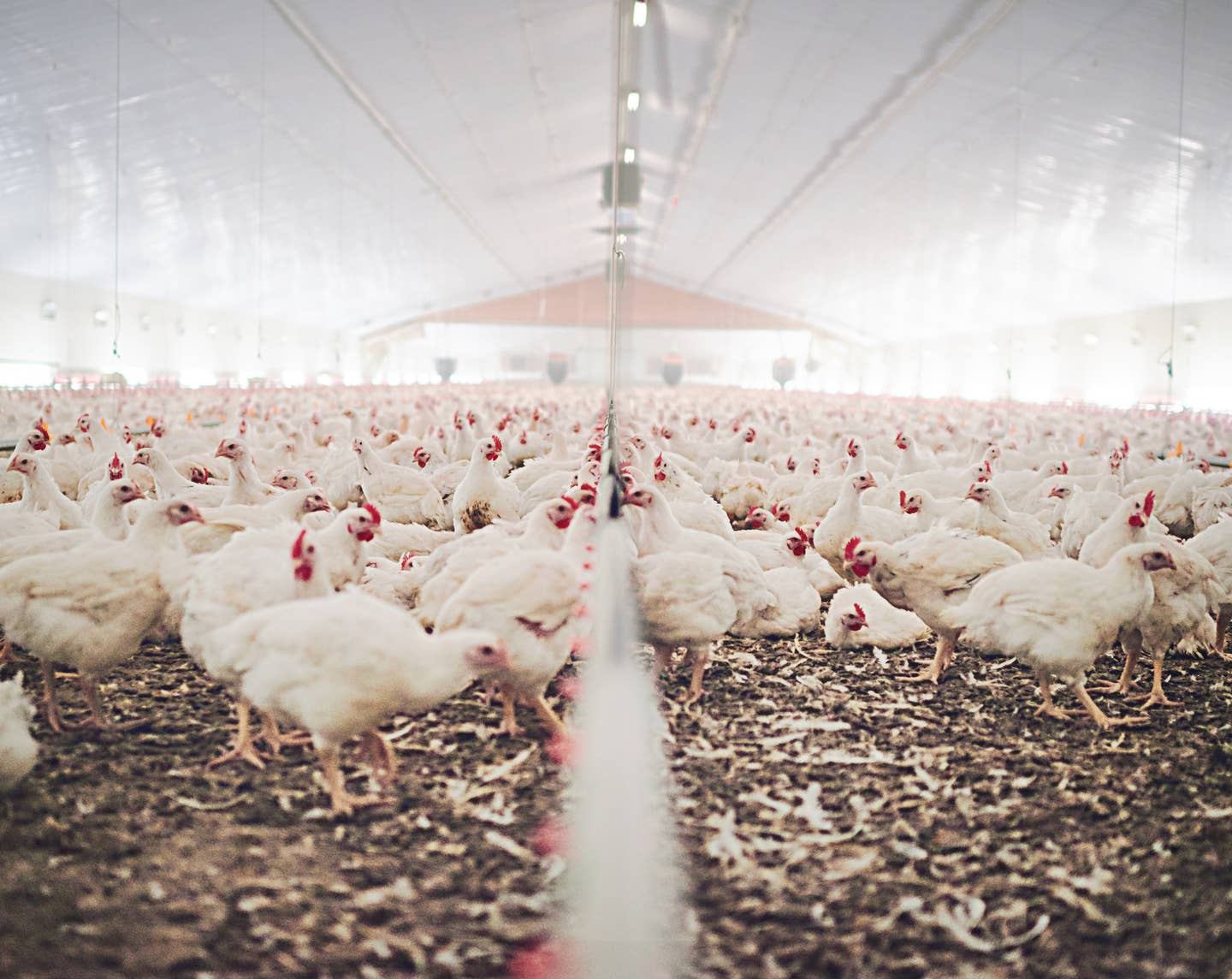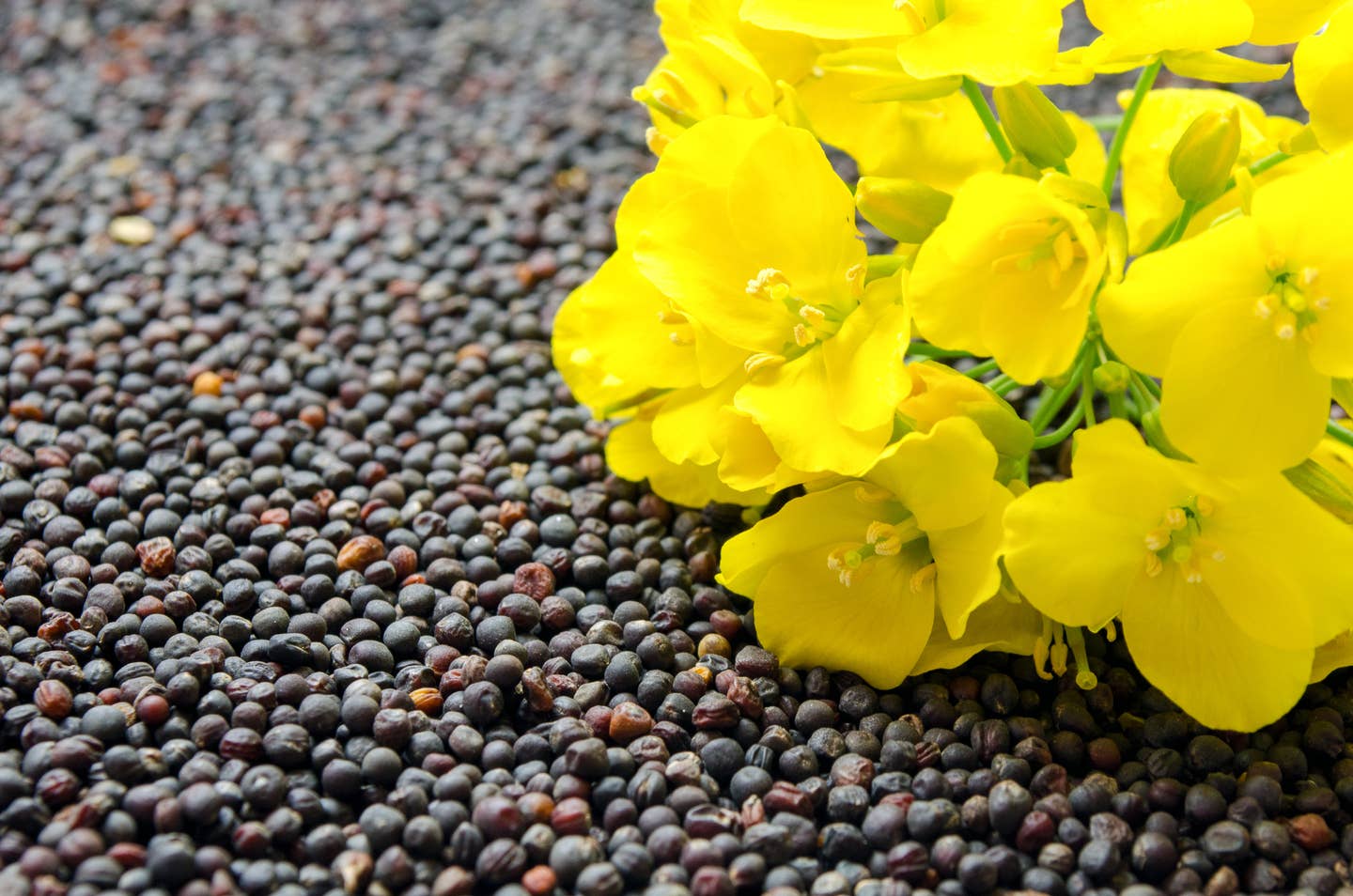
Could This Everyday Crop Be the Key to Combatting Climate Change?
In a summer when there is very little good news about climate change, there is a glimmer of hope coming out of the Salk Institute. An everyday crop called sorghum may one key to combatting excessive carbon emissions created by the agricultural industry and other manmade polluters. The Salk Institute’s Harnessing Plant Initiative is working to assess and develop sorghum plants that efficiently capture and store atmospheric carbon, essentially vacuuming it out of the air.
The five-year campaign is spending $6.2 million to facilitate the growth of sorghum plants that can most efficiently and directly funnel carbon from the atmosphere and store it in the ground to reverse the rising carbon levels.
“Our research community has the opportunity to use cutting-edge science and innovation to help change the course of climate change,” Nadia Shakoor, the senior research scientist at the Donald Danforth Plant Science Center, which is working with the Salk HPI, said. “Sorghum is an incredible plant that holds great promise as a carbon-sequestering crop”
The key to how sorghum pulls carbon out of the air is suberin, a plant tissue that loves carbon and is already found in the roots of plants. By increasing root mass, depth, and suberin content, Salk researchers will transform sorghum, as well as wheat, rice, corn, and other crops into carbon-storing machines. In addition, more ground carbon means farmers benefit from improved soil health. The initiative is being funded in part by a grant from the Bezos Earth Fund.
“If we can optimize plants’ natural ability to capture and store carbon, we can develop plants that not only have the potential to reduce carbon dioxide in the atmosphere but that can also help enrich soils and increase crop yields," states Salk Professor and the Plant Initiative Co-Director, Joanne Chory, on the site.
Shakoor developed sensors that monitor plant environments and behaviors to identify the best variety of sorghum that will most effectively absorb carbon. The project will then select the sorghum crops with the optimal traits, specifically looking for sorghum with deep root systems that will store the most carbon from the air.
The Harnessing Plant Initiative was launched to use plants and crops to directly combat climate change. Arguing that selecting crops that best store carbon could cut down on atmospheric carbon levels, the sustainable initiative believes that sorghum could be central to its mission. Research professor and member of the Harnessing Plant Initiative Todd Michael plans to analyze the plant sample selected by Shakoor and work to breed sorghum plants that maximize carbon absorption.
“We believe sorghum can be optimized to potentially capture and store more carbon and, combined with its inherent traits such as drought tolerance, make a positive contribution to both food security resiliency and the mitigation of negative climate impact,” Shakoor continued. “I greatly appreciate the support of HPI to undertake this research.”
Farmers planted approximately 7 million acres of sorghum across the United States in 2020. The drought-resistant crop is an ideal cash crop to plant to reduce carbon levels in the atmosphere. Beyond the environmental implications, the crop is extremely versatile in the food sector, making it a profitable and sustainable venture through the agriculture sector.
Launching plants that can feed people are capture carbon and return it to the soil
The Salk Insitute launched this initiative to find useful methods of improving sustainability in the agricultural sector and provide a clean solution to cutting down greenhouse gas levels. Alongside sorghum, the organization is studying corn, wheat, soybean, canola, and rice to examine how these crops can be used to absorb the overwhelming carbon levels.
“Crops are some of the most prevalent plants on this planet because there are millions of farmers all over the world who cultivate crops,” Plant Biologist and professor at the Salk Institute Wolfgang Busch said. “So if you use a few crops [and they’re] better at storing carbon for longer you’d have an enormous impact."
Over recent years, the Salk Institue secured more than $80 million for its Harnessing Plants Initiative. The project currently has three more years to test out the different crops to assess the best iteration and breeding capacities of the cash crops. The organization has received significant support across the agriculture and scientific sectors including support from global climate leader Dr. Veerabhadran Ramanathan at Scripps Institution of Oceanography.
Ramanathan highlighted that the total greenhouse gas emissions have reached approximately one trillion tons of C02, and to successfully curb climate change, humans would have to clear out 500 billion tons in the next 40 years. The scientist noted that “Mother Nature already takes the carbon out of the air, the 25 percent of the junk we dumped in it already, otherwise there would’ve been a catastrophic problem already” when discussing how human involvement is necessary to reverse the negative side effects.
The Harvesting Plants Initiative is not the only organization working to improve the production of cash crops: Four different plant breeding projects out of the Texas A&M College of Agriculture and Life Sciences Department of Soil and Crop Sciences received nearly $1.75 million from the U.S. Department of Agriculture’s National Institute of Food and Agriculture (NIFA). The four programs launched similar research projects to enhance sorghum, corn, wheat, and peanut farming practices.
“This is a fantastic program for advancing our national plant breeding effort,” Head of the Department of Soil and Crop Science Dr. David Baltensperger said. “We are extremely fortunate to have four projects selected for this program. These projects will make a difference not only for Texas but for our nation.”
The plant-breeding programs aim to enhance the overall contribution that these cash crops can have for the food sector in terms of yield, nutrition, and efficient resource use. The partnership reflects a similar mission to the Harvesting Plants Initiative’s goal to maximize the sustainability of cash crops.
“These innovative projects will advance crop production efficiency, healthfulness, product quality, and the value of U.S. agricultural plants while increasing farmer profitability and sustainability,” NIFA Director Dr. Carrie Castille said when announcing the grants earlier this summer.
You may think iron is synonymous with meat, and while animal protein certainly has it, that doesn’t mean you can’t get enough iron if you eat a mainly plant-based diet. In fact, you can, if you know the right foods to choose and how to pair them. The daily recommendation from the National Institutes of Health (NIH) for iron intake is 18 milligrams (mg), but not all iron sources are created equal. Here’s what plant-based eaters need to know about iron and which iron-rich foods are best to help reap the benefits.
1. White Mushrooms
1 cup cooked = 3 mg iron (17% daily value (DV))\There are many reasons to eat mushrooms on the regular, but their meaty texture (try a Portobello cap as a meat replacement for a burger!) and ample protein are two of the highlights. Add them to your stir-fry, tacos, or even instead of meat in a faux Bolognese sauce.
2. Lentils
1/2 cup = 3 mg iron (17% DV)You don’t need to eat a huge serving of lentils to get a hearty dose of iron. Just a half-cup provides close to 20% of the iron you need in a day. Just like mushrooms, lentils have a meaty texture that works well in burgers, tacos, or grain bowls.
3. Potatoes
1 medium potato = 2 mg iron (11% DV)The poor potato has gotten such a bad rap. Fear of this carb-rich spud is unwarranted because it’s actually an affordable and delicious source of iron and potassium. So go ahead and have that hash, baked potato, or potato soup and leave the skin on for some added fiber.
4. Cashews
1 ounce = 2 mg iron (11% DV)Most nuts contain iron, but cashews are a standout because they have less fat than some of the other nuts. One ounce of cashews (about 16 to 18 nuts) has 160 calories, 5 grams of protein, and 13 grams of fat. Add a handful of cashews to smoothies, soups, or sauces for some extra creaminess.
5. Tofu
½ cup = 3 mg (15% DV)Not only does tofu have plenty of protein and calcium, but it’s also a good source of iron. It’s very versatile and takes on the flavor of any sauce or marinade, making it a great meat substitute.Keep in mind that you can easily get the iron you need from a plant-based diet.
More From The Beet






